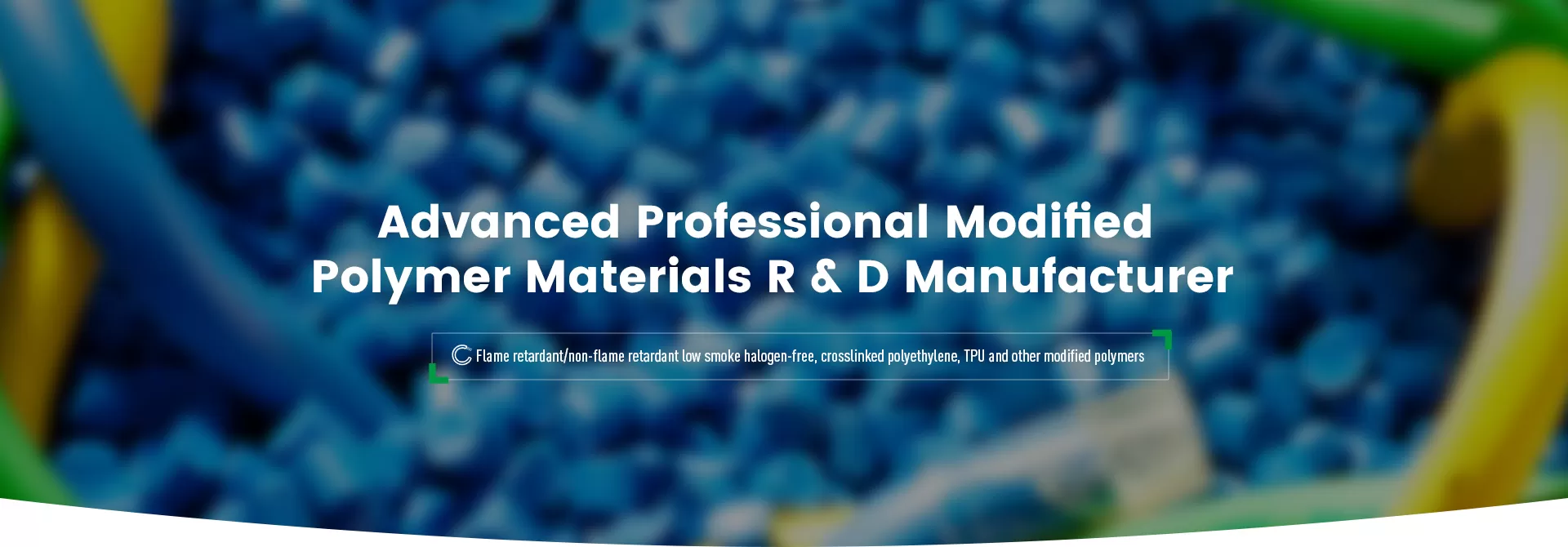
During the construction of cable lines, especially in high-risk environments such as mining areas, the safety of cables is of vital importance. Mining operations face multiple risk factors, such as high temperature, corrosive gases and fire. For this reason, it has become an important task to select suitable cable sheath materials to reduce the risks of cable fires. As an advanced cable insulation material, Low-Smoke Halogen-Free LSZH Flame-Retardant materials play an irreplaceable role in mining cables, which can effectively reduce the flammability of cables and reduce the threat of fire accidents to the safety of mining areas.
Angreen LSZH Jacket Material Can Provide a Full Range of Solutions for Mining Cables.
Statistical data show that fires caused by power cables account for a considerable proportion of fire accidents. In the high-temperature and high-pressure working environment of mines, the fire hazards of power cables are more prominent. Fires may not only destroy facilities and equipment, causing huge economic losses, but also produce a large amount of toxic and harmful halogen gases, such as hydrogen chloride, which pose a serious threat to the health of production personnel. LSZH material, through their low-smoke and halogen-free characteristics, can significantly reduce the emission of toxic gases in fires and minimize the harm to human health when fires occur.
The application environment of mining cables requires them to have excellent high temperature resistance, corrosion resistance and wear resistance. In order to ensure the safety of mining operations, the insulation layer and sheath layer of the cable must have sufficient fire resistance. LSZH materials just meet this demand, especially in the flammable and explosive environment of mining areas, the role of LSZH cables is particularly important.
Flame Retardant Type: used to reduce the burning rate of cables in fire conditions and prevent the spread of fire.
Fire Resistant Type: In addition to having flame retardant properties, it can also maintain insulation properties for a long time in high temperature environments to ensure that the cable can maintain power supply in fires.
The main advantage of low-smoke halogen-free materials is that they produce very little smoke and toxic gases when burned, which is particularly important in mining areas. Once a cable catches fire, the large amount of smoke produced will limit the line of sight, making it extremely difficult for miners to escape and rescue. LSZH cables produce almost no toxic gases during combustion, which greatly improves the safety of emergency evacuation in mines.
In addition, LSZH material has higher corrosion resistance and better high temperature resistance, which enables it to play a longer stable performance in the extreme environment of the mining area. Whether it is a humid environment or a high temperature working condition, LSZH cable can effectively resist the invasion of external factors and maintain its good electrical performance.
| Performance parameters | LSZH cable | Traditional PVC cable |
| Smoke density | ≤ 30% (low smoke) | ≥ 60% (high smoke) |
| Halogen content | 0% (halogen-free) | Contains halogen elements such as chlorine and fluorine |
| Toxic gases released during combustion | No harmful gases such as hydrogen chloride and chlorine | Releases toxic gases such as chlorine and hydrogen chloride |
| Combustion temperature | 300℃-350℃ | 200℃-250℃ |
| Fire resistance | Flame retardant/fire-resistant type (continuous fire exposure time ≥90 minutes) | Only has basic flame retardancy |
| Corrosion resistance | Excellent, chemical corrosion resistance | Poor, easily corroded by acids and alkalis |
| High temperature resistance | Long-term high temperature resistance, continuous working temperature can reach 90℃ | Adapts to low ambient temperature, continuous working temperature is usually 70℃ |
| Cable insulation resistance | ≥10MΩ (above 1kV) | ≥10MΩ (above 1kV) |
| Working voltage range | 0.6/1kV and above | 0.6/1kV and above |
During the construction of mining cables, it must be strictly carried out in accordance with the standards and procedures of relevant departments. Construction personnel need to confirm that the specifications, models and installation requirements of the selected cables meet national safety standards, and all cables must be inspected in detail before construction to ensure that there are no damage, improper bending and other problems. For cables with a rated voltage of more than 1kV, the insulation resistance must be measured by a megohmmeter to ensure the safety of the cable.
The laying of cables must follow reasonable construction methods to avoid improper bending or pulling. For high-altitude operations, speakers or radio equipment should be used for effective command and control to ensure the smooth progress of the laying work. At the same time, the installation of cables should pay attention to accurate measurement according to actual needs to ensure that the cable length is appropriate to avoid waste or installation errors.
In the construction of large-scale mine cables, it is crucial to coordinate the work of each link. In order to ensure the smooth progress of the construction process, it is particularly important to establish a temporary liaison command center. Through walkie-talkies, loudspeakers and other equipment, instructions can be conveyed in a timely manner to ensure efficient cooperation among departments and avoid construction delays or mistakes caused by poor communication.
With the continuous improvement of safety management standards in mining areas, the application of low-smoke halogen-free LSZH materials in mining cables has become increasingly important. It not only greatly improves the safety of cables, reduces fire hazards, but also enhances the adaptability of cables in harsh environments. As an important development direction of the cable industry, the application of LSZH materials will provide a more solid safety guarantee for the construction of power systems in mining areas.